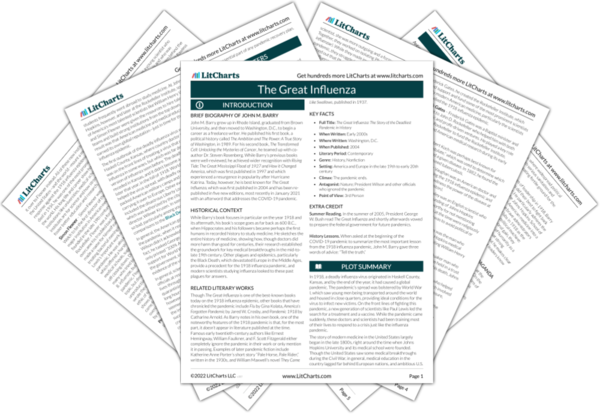Barry provides statistics to help emphasize the scale of the 1918 pandemic. These numbers only tell half the story, though, and the rest of the book will deal more with how people felt as they were living through the influenza pandemic. Both now and in 1918, the Black Death is one of the first things people think of when they think of deadly pandemics. The comparison in this passage makes it clear that although the 1918 influenza pandemic was far from the first disease outbreak to plague humanity, it was unique because of how contagious the virus was.
